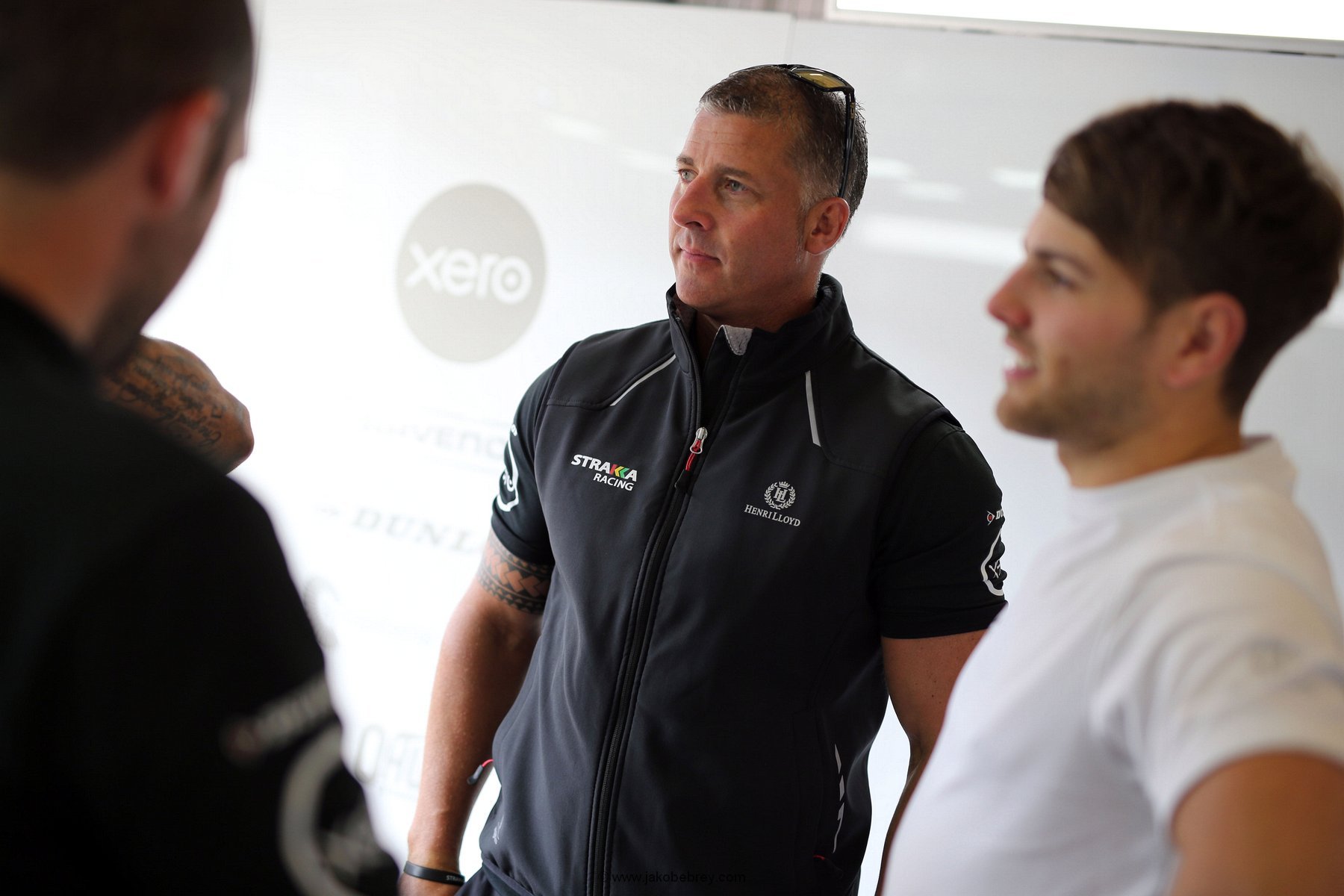How to get race fit: Interview with Dean Fouache
An interview with head of human performance at Strakka Racing, Dean Fouache
We all know that your fitness affects your performance in a race car. It doesn’t matter if you race a swish single seater, a prototype or a retro hot hatch, if you’re fitter than other competitors, you have an advantage.
Juggling your fitness with everything else you need to do as a racing driver can be difficult but it’s definitely not an aspect you should neglect. I’m lucky in that I work from home and have the freedom to go to the gym when I want, and I’m also not building a race car in my spare time…
I spoke to Dean Fouache who is the head of human performance at Strakka Racing and a Hintsa Performance coach.
Where do I start?
Getting started is often the hardest part, especially when there’s so much conflicting information out there on how to actually get race fit.
Dean says: “Ideally drivers would start by seeking the advice of a professional performance coach, this will allow them to be specifically assessed to see what areas of the driver’s overall condition need to be prioritised. If this isn’t possible, we often find that new drivers have a reasonable level of cardiovascular fitness but are extremely inflexible, immobile, (especially though their ankles, hips and back) and are generally very weak. So focusing on moving well then strengthening those movements is a good place to start.”
You’ve probably been running or cycling but now’s the time to add some strength/resistance training into your workouts. Yoga and pilates are very good for improving strength, mobility and flexibility too.
The trick here is balance, to perform at the pinnacle of motorsport you need to be fit across the board. Dean says: “Most professional drivers these days are well-rounded athletes, so require exposure to all of the physical qualities. Here at Strakka Racing, we are currently in our off-season, so are concentrating on improving mobility, increasing strength, and increasing work capacity, but these priorities change as we move through the season around travel and races, etc. Over the entire season, we will also train stability, endurance, power, reactivity, and other physical qualities. It sounds complex but if you get the fundamentals right, you’re very likely to be on the right path.”
Dean also went on to explain how it’s important to focus on your weak areas to bring them in line with the areas where you’re stronger. He says: “As I said earlier, we often see drivers with reasonable cardiovascular fitness but poor strength and mobility, so obviously these would be the priorities. If we had a driver with a poor level of cardio fitness then that could become the priority.”
Managing your time
Spending two hours in the gym every day isn’t a luxury most of us can afford but if you’re really serious about improving your fitness and therefore your capabilities in a race, you’ll find the time to improve your fitness. Dean says: “It’s a balance, and not always an easy one! At Hintsa Performance we believe that getting a driver to perform optimally requires them to have a balance thought their whole lives. Hintsa not only focuses on physical training, but also on mental energy, biomechanics, nutrition, general health, and also recovery. While physical training is certainly an important element of the whole picture, we believe, if any of these elements are out of balance, overall performance will suffer.”
The trick here is to plan your week. Work on your flexibility, strength, and cardiovascular fitness with the weaker points a priority but also make time for work on the car, family time, any other job you might have, socialising, and that all-important sponsorship search. It might take a while to get in the swing of things but when you find that balance and routine, it all seems to fall into place.
Read more: Use the off-season to get loads done before your weekends are taken up with racing
But what should I eat?
Proper nutrition is a huge part of fitness, especially if you’re aiming for some fat loss too. It’s no good exercising regularly to simply undo all that hard work with processed food. The odd cheat meal is fine but for the most part, you need to be eating real food. (Sorry.)
Dean says: “At Strakka we keep things very simple. We educate the drivers on making sensible choices in the lead-up to a race. Our drivers have to be careful of keeping body fat to a minimum but also energy levels high, so eating a well-balanced, highly nutritious diet but also eating enough to feel satisfied. Most meals comprise lean proteins (chicken, fish, etc), carbohydrates (rice, sweet potatoes, or pasta), and plenty of vegetables. We are also extremely mindful of monitoring fluid intake, it’s not just food that’s important, it’s also hydration.”
Read more: How to drink more water (Life Hacker)
Race day foods will look a lot like your normal food. Keep your energy levels up and focus on real, nutritious food. Dean says: “The components of race day meals themselves don’t change that much. The drivers still eat highly nutritious meals consisting of all the food groups. It’s the times of the meals and the quantities that really change. Most of our drivers don’t like to feel overly full or bloated when they are driving so they eat their main meals around 2hrs before the race starts. We then have a variety of snacks like nuts and seeds or biltong, and some great shake recipes (one of their favourites is PAS chocolate whey protein, peanut butter, honey, and a banana) to keep the boys going if they start to feel a little peckish.”
Good nutrition is always important but even more so for endurance races, as Dean explains: “For us personally at Strakka, racing in the World Endurance Championship, quality nutrition and staying hydrated makes a huge difference! When the drivers are racing for anything between 6 and 24hrs, staying alert, focused, and energised is absolutely paramount. We’ve all experienced times when we feel sluggish because we haven’t eaten or drunk enough or because we’ve had a few poor-quality meals. As you can imagine it’s vital this doesn’t happen whilst driving a car that will hit speeds up to 200mph!”
How to train
Callum Illot training - Credit: Redbull
The good news is, you can train even if you only have access to a basic gym. Dean says: “While having expensive, high-tech equipment is fantastic, the vast majority of the physical training required to be in good condition as a racing driver, can be achieved in very basic gyms. If you have a squat rack, some barbells, and dumbbells, then you’ve got pretty much everything you will need. As I said earlier, it really doesn’t have to be, and probably shouldn’t be overly complicated!”
You can even get started at home as long as you’ve got some basic equipment, as Dean explains: “Even at home there is a huge amount you can do. If you invest in a suspension trainer and a few different strength resistance bands it is possible to have a very productive training session. This type of equipment can also be easily packed away when you travel to make sure you can continue to train whilst on the road, even if your hotel doesn’t have a gym.”
One of the fun parts of training we often see people working on is reaction times. This is paramount when training to react to the situations that racing often throws at you. From timing that overtake right to avoiding an on-track incident ahead of you, reaction times are so important. Dean says: “There a wide variety of ways to train your reactions, from simple and fun, right thought to very complex and high tech. A simple way could be as easy as some ball drills. The driver has his back to you, you have the ball, you shout go and drop the ball, the driver has to turn visually locate the ball and then attempt to catch it before it hits the floor.
“To add a bit of fun we’ve also used the child’s toy Bop-It. This gives you instructions to follow and compete against the clock, it then gives you a score on how well you’ve done. You’d be amazed how competitive the boys become! There are also a number of computer-based games and even extremely expensive and advanced technology that gives the driver a visual stimulus and measures how quickly they perceive and then react to it.
“At Strakka we are also lucky enough to have our own state-of-the-art simulator which not only helps with the perception and reaction of the drivers but also helps to familiarise them with the circuits they are going to be racing on.”
How do you keep race fit? Let us know in the comments.
What you can learn from this
Here are a few tips for getting your fitness to where it needs to be
Work on your weak points (be it strength, flexibility, reaction times or cardiovascular fitness)
If you can afford to, hire a performance coach for a proper assessment
Focus on eating real, nutritious food while going easy on processed, junk foods and booze
Find a balance between work, life, racing and training
You can get race-fit with minimal equipment, add ball drills and resistance band training into your home workouts





